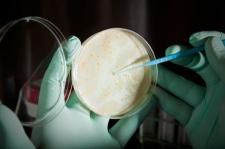Genome games: A secret meet and a controversy
By Pete Shanks,
Deccan Chronicle
| 05. 22. 2016
On May 10, about 130 scientists, entrepreneurs and others held an invitation-only event at Harvard. Organisers told invitees not to talk to the press and not to discuss pending publications related to the topic they were there to discuss. Wait, what? Were they afraid of public panic? Was an asteroid on its way to destroy Earth? Was a catastrophic virus on the loose?
No, they were discussing future research, and how to get a lot more money for it. But they knew that if word got out people might be upset. Because they discussed building a completely synthetic version of a human genome. Not actually artificial people, but a huge step forward in synthetic biology. One of those invited, Drew Endy, a Stanford professor who is one of the leaders in the field, not only refused to come but tweeted: “If you need secrecy to discuss your proposed research (synthesizing a human genome) you are doing something wrong.”
Private water-cooler chat is certainly one way that ideas are developed. But over 100 people flown in from around the country —...
Related Articles
By Josie Ensor, The Times | 12.09.2025
A fertility start-up that promises to screen embryos to give would-be parents their “best baby” has come under fire for a “misuse of science”.
Nucleus Genomics describes its mission as “IVF for genetic optimisation”, offering advanced embryo testing that allows...
By Hannah Devlin, The Guardian | 12.06.2025
Couples undergoing IVF in the UK are exploiting an apparent legal loophole to rank their embryos based on genetic predictions of IQ, height and health, the Guardian has learned.
The controversial screening technique, which scores embryos based on their DNA...
By Frankie Fattorini, Pharmaceutical Technology | 12.02.2025
Próspera, a charter city on Roatán island in Honduras, hosts two biotechs working to combat ageing through gene therapy, as the organisation behind the city advertises its “flexible” regulatory jurisdiction to attract more developers.
In 2021, Minicircle set up a...
By Vardit Ravitsky, The Hastings Center | 12.04.2025
Embryo testing is advancing fast—but how far is too far? How and where do we draw the line between preventing disease and selecting for “desirable” traits? What are the ethical implications for parents, children, clinicians, and society at large? These...




